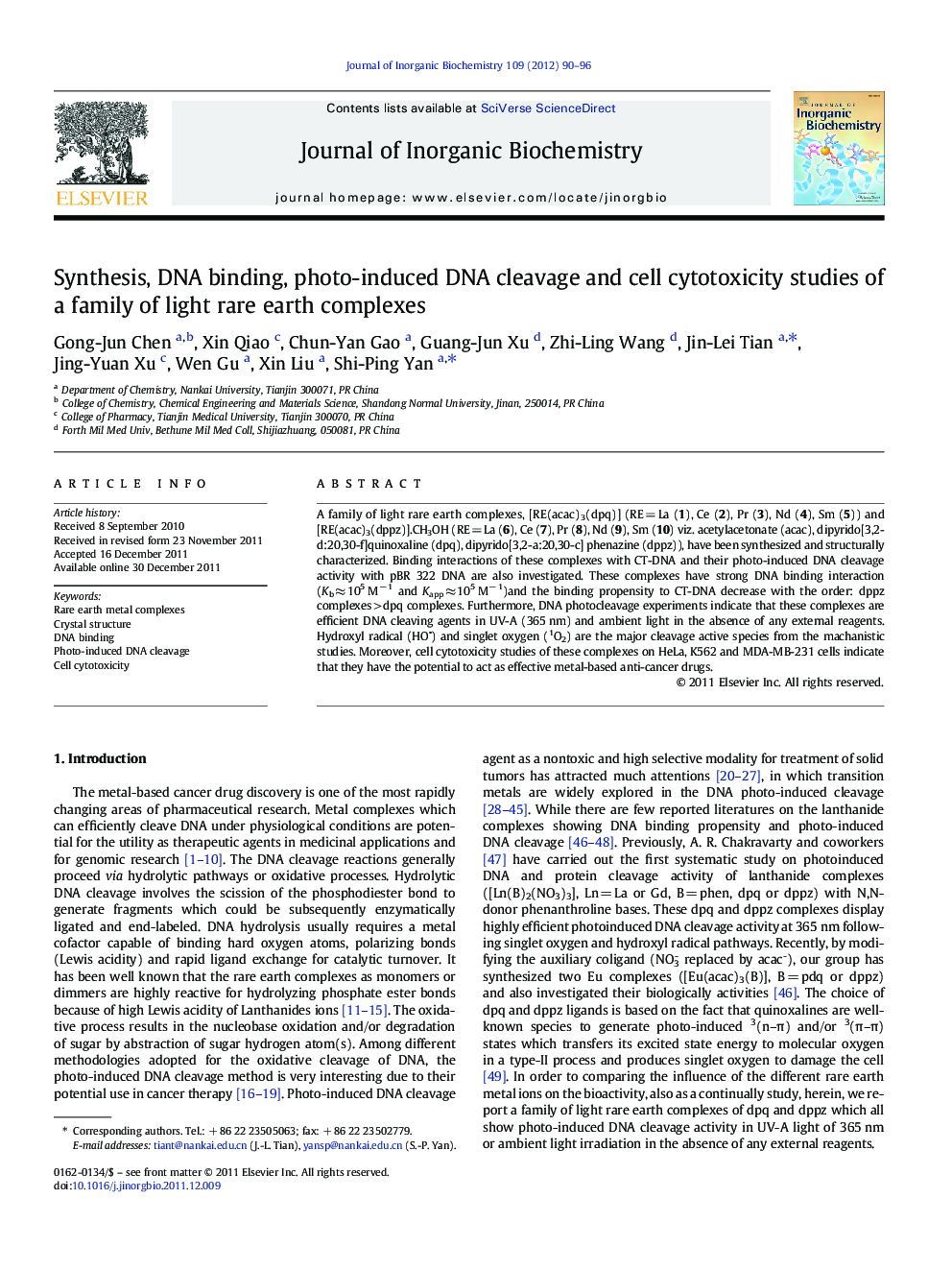| Article ID | Journal | Published Year | Pages | File Type |
|---|---|---|---|---|
| 1317784 | Journal of Inorganic Biochemistry | 2012 | 7 Pages |
A family of light rare earth complexes, [RE(acac)3(dpq)] (RE = La (1), Ce (2), Pr (3), Nd (4), Sm (5)) and [RE(acac)3(dppz)].CH3OH (RE = La (6), Ce (7), Pr (8), Nd (9), Sm (10) viz. acetylacetonate (acac), dipyrido[3,2-d:20,30-f]quinoxaline (dpq), dipyrido[3,2-a:20,30-c] phenazine (dppz)), have been synthesized and structurally characterized. Binding interactions of these complexes with CT-DNA and their photo-induced DNA cleavage activity with pBR 322 DNA are also investigated. These complexes have strong DNA binding interaction (Kb ≈ 105 M− 1 and Kapp ≈ 105 M− 1)and the binding propensity to CT-DNA decrease with the order: dppz complexes > dpq complexes. Furthermore, DNA photocleavage experiments indicate that these complexes are efficient DNA cleaving agents in UV-A (365 nm) and ambient light in the absence of any external reagents. Hydroxyl radical (HO•) and singlet oxygen (1O2) are the major cleavage active species from the machanistic studies. Moreover, cell cytotoxicity studies of these complexes on HeLa, K562 and MDA-MB-231 cells indicate that they have the potential to act as effective metal-based anti-cancer drugs.
Graphical abstractA family of light rare earth complexes, [RE(acac)3(dpq)] and [RE(acac)3(dppz)]CH3OH have been synthesized and their DNA binding and photo-induced DNA cleavage activity are investigated.The light rare earth metal elements have less effect in the DNA binding, DNA cleavage and cytotoxicity.Figure optionsDownload full-size imageDownload as PowerPoint slide
